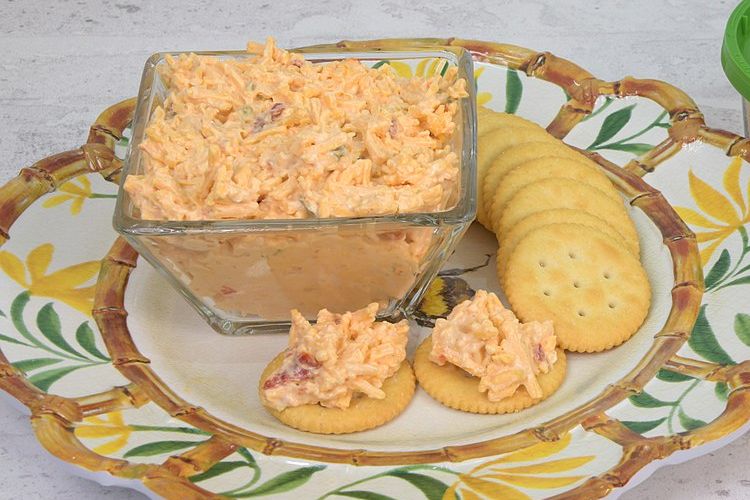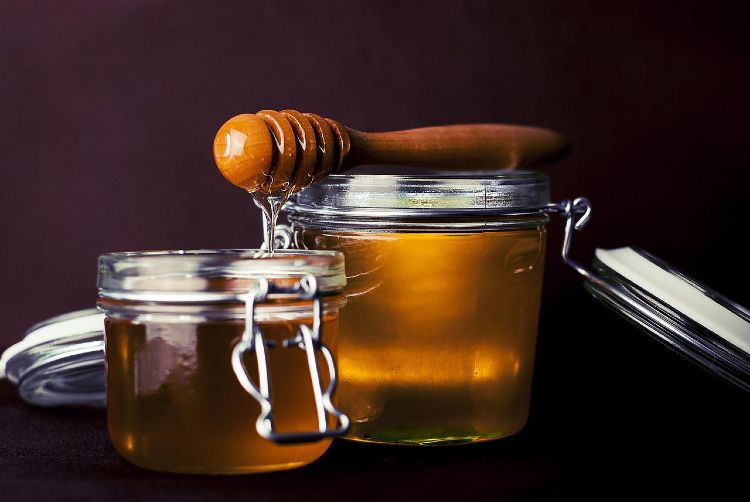CIPR South West Communicator’s Conference, ‘The Rules of Engagement’
I was invited by Pam Lloyd PR to speak at this year’s CIPR South West Communicator’s Conference, entitled ‘The Rules of Engagement’, at Engineer’s House, in Clifton Down, Bristol. The CIPR {Chartered Institute of Public Relations} is the professional body that offers membership to all Public Relations agents, both nationally and internationally, and they hold regional conferences every year to debate and discuss the best practices and challenges within the industry.
I was asked to talk about how The Foodie Bugle was created, how it moved from online to print, my use of social media, engaging with PRs and the various ways in which PR agents engage with me and could improve the way they approach food bloggers and other writers, both online and in print.
This is a transcript of my speech.
How The Foodie Bugle was born
I spent a year creating The Foodie Bugle on paper, before launching it in March 2011 online. After being a cook, food stylist, writer, and cookery teacher for many years, I began to question the integrity and narrow focus of mainstream food and drink media, and to find its horizons limited.
With every other food and lifestyle magazine I found the same, repetitive pattern of celebrity chef or designer-worship uninspiring and un-educational.
Along with other likeminded foodies, I felt that there was nowhere where small, family-owned businesses, artisan food and drink producers, farmers and crafts people who design and create in and around the industry were being showcased. I wanted to create an independent, edited and curated platform, focusing on good, clean, fair food and craftsmanship. We also organised lectures and get-togethers for artisans and foodies from all walks of life.
Sharing good quality, useful news and views with our foodie tribe is important in the process of engagement. We are all media companies now. I have worked hard and consistently at my social media interaction, believing that, when used wisely, it is a democratic platform for discussion and debate.
Then there followed the journey to print
The move from online to print was organic ~ there has been a huge renaissance in the world of independent magazine publishing in the last two years. Many readers appreciate the world of paper above the world of tablets or PCs. I wanted to create a very tactile, high production value Foodie Bugle magazine designed and printed in Britain which is now sold in top end shops including the Conran Shop, Daylesford, Waterstones, Foyles, Paperchase as well as top food halls, farm shops and galleries.
It is aimed at an A and B, older, wiser demographic that appreciates artisan food, drink and crafts created by a skilled community who place sustainability, substance and seasonality first and foremost.
The changing future of TFB
My husband and I will be driving The Foodie Bugle brand in a totally new direction. Our aim is to create The Foodie Bugle Shop and eatery, a grocery food hall and useful things store, both online and on a high street in a beautiful town. We will be stocking Made in Britain finds we have uncovered in the last few years.
We are using our website and print editions to bugle about original excellence, creating a buzzing community hub, bringing energy to a high street with artisan food at its centre.
Brands have to adapt constantly. The world of online and print writing has become ever-more competitive and unsustainable. The Foodie Bugle website and print magazines have now been copied by so many people. There is no way you can stop copy-cats from stealing your design, style, content and contacts. One magazine called Kinfolk has been copied so many times, the publishers would become awfully rich if they decided to sue the hordes of copy-cats.
The current state of food writing-blogging
Food writing is such an over-crowded market ~ look at your average magazines and cookbooks and all you will see is endless repetition, fluff and puff content and aspirational photography. We have reached saturation point and are on a flood plain.
There is no shortage of reportage on the food industry, it is 24-7, wall to wall coverage. Within a few clicks on the Internet you see Great British Bake Off groupies comparing the thinness of their macarons juxtaposed with news that Tesco throws 30 000 tonnes of food in landfill and half a million British people are relying on food aid to stay alive. From blogs to newspapers, TV and radio, food commentary has exploded as a genre.
The collective need to be seen and heard is now deafening. But is anybody listening to anybody else? True engagement, surely, is more about listening and learning and less about jostling for attention.
The growth in instant fame has also increasingly led to an anti-social level of narcissism, as if people have lost all bearing of how to behave. The broadcasting of “Buy my book! Read my blog! Vote for me!” is incessant. Obsessive targeting of influencers that can be exploited to promote a business, a book or a brand is, unfortunately, the new “engagement”.
Mainstream writers often dismiss and belittle bloggers. You are deemed a second class citizen, until you are of use. Suddenly, when there is a book or brand to sell, those same detractors are all over you because of your blog following. This thankless “vulture style PR engagement” mentality does little for the image of the industry.
But through all the noise and self-promotion, excellence speaks for itself quietly, whilst mediocrity has to shout. There is an awful lot of mediocrity out there, and separating the intelligent “wheat” from the self-obsessed “chaff” is the PR challenge of the 21st Century.
I have been a food writer for The English Garden and The Simple Things print magazines and through other freelance journalists I hear all the time about editors who care only about how many followers writers have on Twitter and likes on Facebook, whether they can work for free and whether they are prepared to do anything and everything for the sake of PR.
Many older journalists have been traded in for younger, thinner models, who Tweet 100 times a day, promote celebrity brands, upload their cakes on Pinterest and look sexy on Instagram. Sales and success are no longer linked to talent, but to connections, egos, cliques and pushiness. Is anyone fooled by this exhibitionism?
So how do PR consultants engage with TFB?
Engage is not the right word. Harass and bullet spray are better verbs.
The quality of the people who approach me is shockingly low.
Bad grammar, spelling, syntax and presentation are symptomatic of an unregulated industry in mindless pursuit of free publicity.
In our contact and about pages I have written “We do not respond to PR enquiries” and our ethos is a firm rebuttal of ready meals, frozen foods, celebrity chefs, snacks, fizzy drinks, gimmicks, fads etc. Every day I receive scores of PR e-mails from all over the world announcing new ready meals, frozen foods, celebrity chefs, snacks, fizzy drinks, gimmicks, fads etc.
Here are recent examples from my inbox:
“hi ya food bulge!!! we think our wasabi and vodka infused iced-tea powder mixes are the ideal treat for your readers. what is your address???”
“Dear Abigail, we’ve noticed your blog needs celebrity ooomph so we are inviting you to a Meet-Rave-Tweet party!”
“Hi food blogger guys! We thought you might like to know about our latest guerilla stunt in collaboration with {name of famous tea brand} in Manchester. We’d love it if you could share this video with your readers and help to make it a viral hit!”
“Syvanna! Come to a yum-yum pop-up supper party in Shoreditch tonite!” {sent at 5pm}
I live in Wiltshire. 87% of Britain’s residents do not live in London, a statistic lost in the world of PR.
I delete 90% of my inbox every day before opening e-mails. I know who I want to be in contact with and I can engage with artisans through careful research, word of mouth, markets, fairs, festivals and social media.
For me true engagement = hard work
There are no shortcuts. When I want to engage with artisans, I research, analyse, visit, read and think. It is the only way to learn and make a good impression. Before I approach a company, I make sure I know everything about its history, market, technique, methodology, competition and ethos.
If your target engagement market is writers who will do absolutely anything for a fee or freebie, are their platforms and readership really worth pursuing? Are opportunistic flogger bloggers, followed by other bored housewives, all lusting after a free, pink KitchenAid mixer, really going to heighten brand awareness?
Intelligent, affluent, discerning consumers are more likely to click out when entering a cheap website covered in flashing promotions, giveaways and advertising. PRs are obsessed with the number of website hits, not the quality of the reader or author.
Ways PRs can improve their engagement.
Top priorities are: accuracy, checking, reading, care, professional presentation, targeting.
Good manners are really important. If someone does you a favour, writes a blog, Tweets an event or replies favourably, gratitude, reciprocity and good manners go a very long way for future collaboration.
Focus on reading and writing. The average school in Britain will not prepare you for the job market, you have to prepare yourself.
Check, check, check all the details and then check them again.
Read the publication you are approaching from start to finish. Then read it again, slowly, making notes about content, structure, themes and readership.
Word e-mail titles carefully. Tweak titles to make them more likely to interest each individual you are sending it to. Stop. Think. Would you respond to this title?
Remove gimmicks, fads and celebrities from your work ~ your life will be the better for it.
Accompany your e-mail with professional photography and a professionally designed e-mail flier. The recipient is more likely to upload it to Facebook, Pin it or Tweet it.
Do not approach people with a press launch that will take place a 3 hour train ride away each way with one day’s notice.
If you meet a writer for two minutes at a conference or talk, do not rush home to cover their Facebook wall with your client’s latest product launch, Tweet them about the latest restaurant opening and ask to connect with them on LinkedIn. Like all human relationships, time and patience create goodwill.
Further Information
CIPR ~ www.cipr.co.uk
To follow the South West CIPR group on Twitter ~ @CIPR_SW


